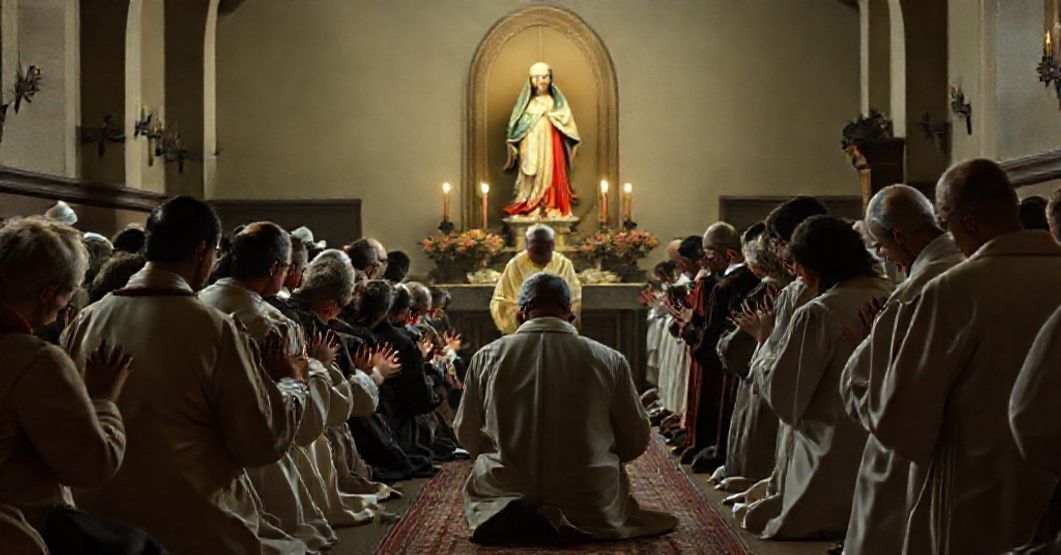Antipopes of the Antichurch



















Timeline of this heretical pontiff
Encyclical Letters
+ 15 posts1959
+ 7 posts1961
+ 4 posts1962
+ 2 posts1963
+ 2 postsApostolic Exhortations
+ 3 postsApostolic Constitutions
+ 93 posts1958
+ 6 posts1959
+ 87 postsMotu Proprio
+ 15 posts1958
+ 1 posts1959
+ 1 posts1962
+ 11 postsApostolic Letters
+ 151 posts1958
+ 4 posts1959
+ 63 posts1960
+ 78 posts1961
+ 1 posts1962
+ 4 posts1963
+ 1 postsSpeeches
+ 99 posts1958
+ 2 posts1959
+ 26 posts1960
+ 29 posts1961
+ 16 posts1962
+ 24 postsMessages
+ 6 posts1959
+ 4 postsHomilies
+ 4 postsLetters
+ 152 posts1958
+ 1 posts1959
+ 48 posts1960
+ 32 posts1961
+ 31 posts1962
+ 30 posts1963
+ 10 postsNot categorized
+ 1 posts1958
+ 1 postsNews feed


Pacensis in Bolivia (1958.11.07)
In this Latin text dated 7 November 1958, Giovanni Roncalli, under the name of John XXIII, issues an apostolic constitution that reorganizes territories of the Archdiocese of La Paz in Bolivia in order to erect a new territorial jurisdiction: the so‑called praelatura nullius of Coroico (Coroicensis). The document details: the territorial detachment from La Paz, subordination of the new entity to the metropolitan see, transfer of clergy and acts, erection of the church of St Peter in Coroico as cathedral, norms on the seminary and revenues, and execution clauses entrusted to the then apostolic nunciature. Beneath the administrative precision, this text is the first cold bureaucratic seal of the conciliar usurpation: a man elected after Pius XII, without Catholic faith, begins to act as legislator of the Church while introducing a new, fraudulent line of authority.


Novem per dies (1963.05.20)
The text presented is an exhortation of John XXIII calling the episcopate to observe a Pentecost novena, uniting in prayer with him and the universal flock to implore the Holy Ghost upon the upcoming second session of the so‑called Vatican II Council. It evokes the Cenacle with the Apostles and Our Lady, encourages interior recollection, and frames these novendial prayers as oriented to the “pastoral” aims of the council, especially “renewal of life and morals,” apostolic zeal, and preparation for a supposed new “outpouring” of Pentecostal wonders upon the conciliar assembly.


Sacrae Laudis (1962.01.06)
The text is a Latin exhortation of antipope John XXIII, urging the clergy to recite the Divine Office with greater fervour for the “happy outcome” of Vatican II, presenting the coming council as a “new Pentecost” and “new Epiphany,” and uniting the global presbyterate around prayers for its success, while rooting this call in traditional themes: St Joseph and the Magi, the Breviary as “sacrifice of praise,” ecclesial unity, and the four marks of the Church.


Paenitentiam agere (1962.07.01)
Pope John XXIII’s text “Paenitentiam agere” is presented as a solemn exhortation to prayer and penance in view of the impending Vatican II, grounding the call in Scripture, the Fathers, the practice of the Church, and previous councils, especially to obtain graces for the Council and a “renewal” of Christian life. Beneath this pious exterior, however, stands a calculated misuse of Catholic vocabulary to sanctify the conciliar revolution and to conscript the faithful’s penitential acts into the service of a project objectively ordered against the public Kingship of Christ and the immutable doctrine of the Church.
Varia
Announcement:
– News feed –implemented
– Antipopes separate web sites with their all documents refutation – in progress
